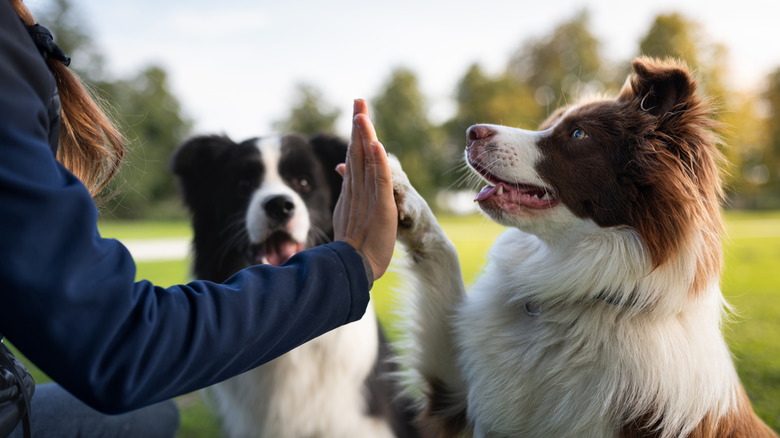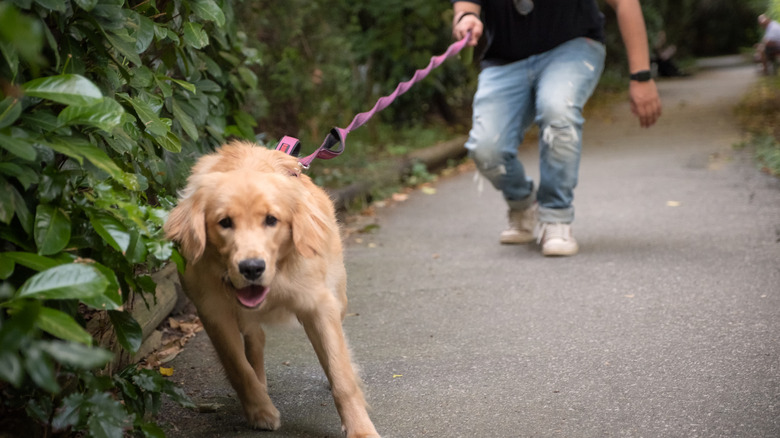We Asked Professional Dog Trainers Which Popular Cues Most Pet Owners Are Teaching Wrong
Training your dog to obey commands is one of the most important things you can do. It can help keep your pet safe, improve your communication, and strengthen your bond. It can also keep your four-legged friend out of trouble while reducing behavioral issues. However, dog owners unknowingly make mistakes sometimes, so we asked professional trainers which popular cues pet owners tend to teach incorrectly. One involves timing, while another involves leash training.
According to Fun Paw Care CEO Russell Hartstein, a certified dog behaviorist and trainer in Los Angeles, many dog parents understand that dogs associate a stimulus with a response, but they get the timing wrong for the cue and the stimulus. "The timing is very short. Generally under a second," he exclusively explains to Cuteness. "Also, the mechanics of dog training as a sport need to be practiced and learned." He says owners should provide the reward (treat) about half a second after the dog follows the cue. "For example, use the marker word 'Yes!' Then give your pet a treat half a second after your marker," Hartstein says.
Cues can be physical or verbal. An example of a physical cue would be pointing to an object you want your dog to touch or in the direction you want your dog to go. Verbal cues include saying words like "sit," "stay," or "fetch." If you're not getting the desired results from your dog, Hartstein recommends taking a closer look at your delivery. "[Focus on the] direction, speed, and angle you are delivering treats and your prosodic of speech," he says. The reward you give your dog afterward can be a soft dog treat or a hard one, and you may even want to consider delicious holiday-flavored dog treats for something extra special. From there, it's time to focus on leash training more intuitively.
Some dog owners don't leash train properly
"The most common behaviors I see taught incorrectly are actually skills we use day to day," Amelia Steele, a VSA-certified professional dog trainer and behavioral specialist in Manchester, England, exclusively shares with Cuteness. Steele has built an online training community called The Training Hub and has helped thousands of pet owners around the world train their dogs. "For example, one of the most common ones I see taught wrong is actually loose leash walking," they add. It's common for dog walkers to take a reactive approach, such as trying to stop their dog from pulling on its leash, usually by pulling back. However, Steele recommends taking a proactive approach by teaching the dog what you want it to do instead.
"The thing about loose leash walking is that it's not actually one behavior. It's a combination of skills that all take time to develop," Steele says. "For example, we're asking our dogs to walk slower than their natural pace, ignore distractions, and engage with us." While many humans may think this should be simple for a dog to comprehend, it's actually "one of the most tricky skills for our dogs to learn," according to Steele.
The good news is that there are ways to improve in the training department. Steele recommends focusing on the foundations of the training first. "Often we gloss over the fundamentals of training and jump straight to the all or nothing behaviour," they tell us. "Working on the foundations first and growing an understanding of training concepts will always set you up for success and will allow you to approach every behavior with confidence!" So, you may want to go one by one, working with your pup to hone something like its pace first, then moving on to the next step. Interested in other dog training stories now? Check out Cesar Millan's trick for acing dog training.

